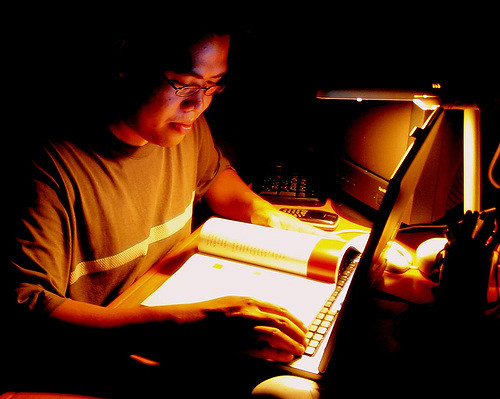We take light for granted every day. We use it so much that we don’t stop to think how it was made or discovered, how it travels and the efforts needed in order to have it right at our house by just pressing a button or moving a switch. Kenny Slaught thinks that light should play a bigger role in the way we power our world and it should start being used at a small scale in order to test and understand the technology even better.
So, in that way, we are going to analyse a non-profit organization based in Santa Barbara California, specifically in Goleta, in southern Santa Barbara, that is aiming at providing healthy light and power for people that really don’t have much access to it and trying to eliminate the health and environmental issues associated with other light sources used by this type of population, such as kerosene. At the same time they are allowing children to have the opportunity to study in the evenings with their lamp. Let’s take a look at their very interesting story that fits perfectly with the macro issue of global warming and environmental damage.
The University of California, Santa Barbara, UCSB, has been digging into the world of high efficiency visible LEDs, efficient solar cells and efficient batteries and solar power where they have been having amazing results. The solar power project, which is the back bone for the Unite To Light idea, started with a visit from Pastor Kofi Fosuhene and Dr. Osei Darkwa to Santa Barbara on behalf of the Goleta Presbyterian Church and Pangaea, a Santa Barbara non-profit that was directly related to the problems that Ghana had at the moment. Dr. Darkwa visited the Institute for Energy Efficiency and told them the sad reality that his people had to endure in order to have energy: he explained that many people in Africa that use, and rely on kerosene for reading, tend to suffer a lot of health and financial problems. The two men from Africa had an odd request for reading lights powered by solar energy. It had to be specifically reading lights because it was directly related to children and education. It was a challenge, and it was accepted by John Bowers, Jock Bovington and the Engineers without Borders – UCSB Lighting Group; and 3 local engineers: David Schmidt working on electronics, Norm Gardner that oversaw the physical layout and Marty Jenkins that looked after quality and reliability.
A product was designed and then tested with great success in Ghana. Here is where the non-profit, Unite to Light was born. They continued working on the light but then diverted their efforts to work towards improvements and developing relationships with manufacturing companies. The light started to be manufactured by Pangaea and Goleta Presbyterian Church: first 100 lights were sent to Ghana and then 800 lights were sent to Presbyterian churches in Ghana. The wheel was on the move and it couldn’t be stopped. In 2010 the 501c3 non-profit application with the IRS was received thanks the help of people such as Eric Bowers and Claude Dorais, lawyers in Santa Barbara and Jeff and Jennica Harris, accountants in Santa Barbara.
After seeing the success of the idea, things got bigger. Now Unite to Light has relationships with over 100 organizations in more than 60 countries that are committed to providing solar based lighting to people in third world countries. They have a wide network that include all types of members such as other non-profits, charity organizations, individuals that have solar energy or energy business ideas, private companies that buy the lights in quantity, and many more. They also have two key partners which are the Rotary International and Direct Relief International.

So how is it that they work: they have two products, the Luke Light and the UTL-C. The Luke Light is a reading lamp that is powered by solar energy. It is the main product that they offer and is simple and efficient. It can be used to educate students, work at night or hang out with friends; And the UTL-C which is a personal lighting and USB Charging solution. It is the same lamp but it has a USB to charge a personal phone, an e-reader or any small electronic device.
They sell the lights around the world and they really emphasize on selling them because they want their distributors to sell and make a profit as any other distributor does. The reasoning behind this is that they want the business to be sustainable in time as a regular business model. This will motivate more purchases and will then impact the economy as a whole.
Be sure to also check out this article on how Santa Barbara is healing the ocean.
